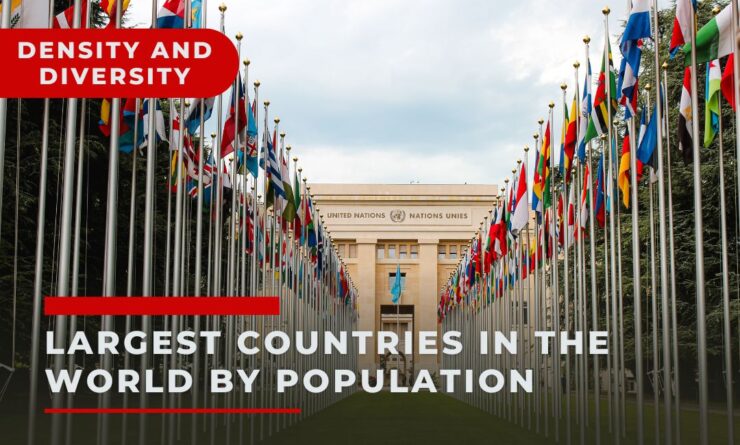In-depth analysis by a global demographics expert, supported by World Bank data, unveils compelling trends in the world’s most populous countries. The research highlights China’s continued dominance as the world’s most populous nation, surpassing 1.43 billion people, showcasing the nation’s vastness and regional diversity.

China Leads, India Surges
China maintains its top position with an astounding 1.43 billion population, emphasizing its size and diverse landscapes. Meanwhile, India closely follows with 1.42 billion, experiencing a noteworthy surge of nearly 100 million since 2017, driven by factors like high birth rates and advancements in healthcare.
The United States, a focus of the expert’s demographic scrutiny, secures the third position globally with 338 million people. Notably, its distinctive feature lies in low population density, merely 36 people per square kilometer, setting it apart from the densely populated China and India.
The expert’s observations shed light on the dynamic demographic landscapes, revealing the impact of factors like birth rates and healthcare on population growth. The contrasting population densities among these nations reflect the unique demographic tapestry shaping their respective trajectories.
READ ALSO: Smart Strategies for Budget-Friendly Travel: Making Every Penny Count
Top 5 Most Populated Countries
The world’s most populous countries are China, India, the United States, Indonesia, and Pakistan.
China: China leads with a staggering 1.43 billion people, despite past policies to control growth.
India: India closely follows with 1.42 billion, experiencing rapid growth due to high birth rates and better healthcare.
United States: The USA ranks third with 338 million, known for its diverse population shaped by immigration.
Indonesia: Indonesia claims the fourth spot with 276 million, spread across numerous islands, impacting resource distribution.
Pakistan: Pakistan is fifth, growing rapidly at 236 million, presenting challenges in resource management and infrastructure.




